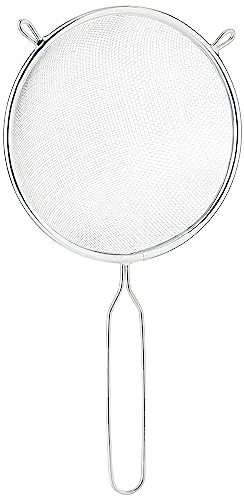What is the Proper Way to Store a Sieve?
When it comes to storing a sieve, there are a few key factors to consider in order to keep it in the best possible condition and prolong its lifespan. The proper storage of a sieve involves cleaning it thoroughly, protecting it from corrosion, finding an appropriate storage location, and using suitable containers or covers to keep it safe. In this article, we will discuss the steps you should take to ensure the proper storage of a sieve.
Clean the Sieve
Before storing your sieve, it is important to clean it thoroughly to remove any leftover debris or particles. Start by rinsing the sieve under running water to remove larger particles. Next, fill a container or sink with warm water and add a mild detergent. Soak the sieve in the soapy water for a few minutes to loosen any stuck-on residue. Then, use a soft brush or sponge to gently scrub the sieve, paying particular attention to the mesh or screen. Rinse the sieve thoroughly to remove all traces of soap residue. Finally, pat it dry with a clean towel or allow it to air dry completely before storing.
Protect from Corrosion
In order to protect the sieve from corrosion, it is important to dry it thoroughly before storing. Any moisture left on the sieve can promote the growth of rust or corrosion over time, which can damage the mesh or screen. After cleaning the sieve, use a clean towel or allow it to air dry completely. If necessary, you can also use a hairdryer on a low heat setting to ensure all moisture is removed. Once the sieve is completely dry, you can proceed to the next step of storing it.
Find an Appropriate Storage Location
When choosing a storage location for your sieve, it is important to consider factors such as humidity, temperature, and exposure to sunlight. Ideally, you want to store the sieve in a cool, dry place away from direct sunlight. Excessive heat, moisture, or exposure to sunlight can damage the materials and affect the performance of the sieve. Some suitable storage locations include cabinets, closets, or dedicated storage areas specifically designed for kitchenware or tools.
Use Suitable Containers or Covers
Using suitable containers or covers is another important aspect of storing a sieve properly. Since sieves come in various shapes and sizes, finding the right container or cover can help protect it from dust, dirt, or other contaminants. After cleaning and drying the sieve, you can place it in a clean bag or wrap it in a clean cloth or paper towel before storing it. Alternatively, you can also use a specialized storage container or case designed for sieves. These containers are often stackable, making storage more organized and convenient.
Properly storing a sieve involves cleaning it thoroughly, protecting it from corrosion, finding an appropriate storage location, and using suitable containers or covers. By following these steps, you can help ensure that your sieve remains in good condition and retains its functionality for a longer period of time. Investing a little time and effort in proper storage can go a long way in maintaining the quality and performance of your sieve.






